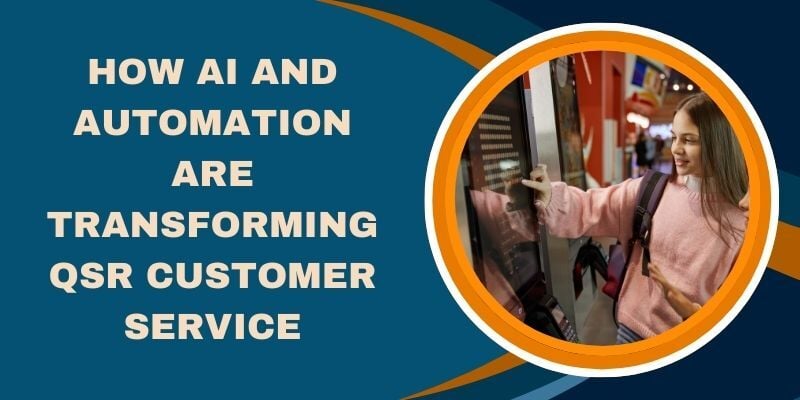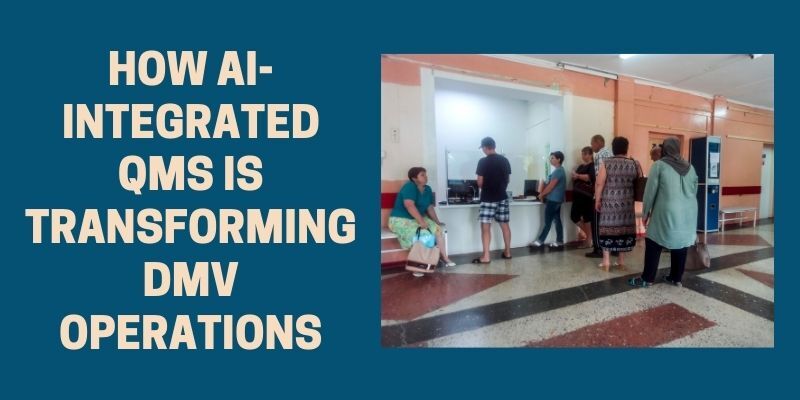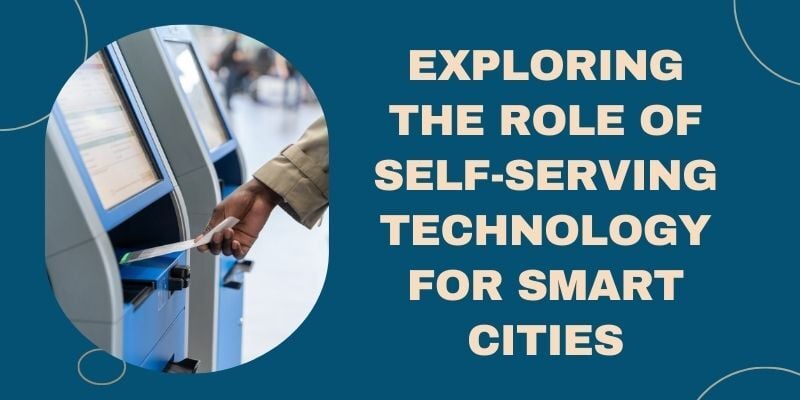Frontline Customer Service is critical in shaping how customers perceive a business. Frontline employees act as the face of the company, engaging in first-line customer support interactions that directly affect customer satisfaction.
Their ability to resolve issues quickly and leave a positive impression is essential for maintaining customer loyalty.
This blog will explore practical strategies for improving direct customer assistance and creating more robust client-facing service experiences that benefit the company and its customers.
Understanding the Role of Frontline Employees
Frontline employees are often the first point of contact between a customer and the brand. This initial interaction is crucial, forming the foundation of customer expectations.
A positive first impression can lead to long-term customer relationships, while a negative experience can turn potential loyal customers away.
Whether the interaction occurs in person, over the phone, or via digital channels, the ability to connect effectively with the customer determines the overall experience.
Moreover, frontline staff don’t just perform transactions or provide support—they represent the brand’s values and culture.
How they handle customer inquiries, complaints, or requests influences customer perceptions, making their role in developing consumer relations skills vital to the business’s image.
Whether it’s face-to-face customer support or digital interaction, their influence on customer loyalty cannot be overstated.
Gathering Feedback to Identify Improvement Areas
Gathering customer feedback is essential to identifying improvement areas. This feedback offers valuable insights into customer sentiment and allows companies to identify areas where first-line customer support can improve.
It also helps to understand how frontline employees meet customers’ needs and where service quality gaps may exist.
Methods for Collecting Feedback:
- Surveys: One of the most common and effective ways to gather feedback is through customer service surveys. These surveys allow customers to share their experiences and provide insights into where frontline customer service may fall short.
- NPS and CSAT Metrics: Net Promoter Score (NPS) and Customer Satisfaction Score (CSAT) are invaluable tools for measuring customer loyalty and satisfaction. NPS asks customers how likely they are to recommend the business, while CSAT measures overall satisfaction with the service provided. These metrics can help businesses track the performance of their client-facing service over time and make data-driven improvements.
How to Improve Frontline Customer Service Performance

Improving the performance of frontline customer service requires a strategic approach that blends training, communication, and technology.
A well-rounded and continually improving first-line customer support team is essential to providing the level of service that modern customers expect. Below are key strategies that can help elevate the performance of your frontline staff:
1. Regular Training Programs
One of the most fundamental ways to improve frontline customer service performance is through regular, ongoing training. The client-facing service environment constantly evolves, with new tools, technologies, and customer expectations constantly emerging.
To keep up with these changes, frontline employees must continually update their knowledge and skills.
- Technical Skills: This involves training staff on any new software or tools used in the customer service process, such as CRM systems, ticketing systems, or communication platforms. Technical proficiency enables frontline employees to manage customer interactions efficiently, reducing wait times and improving the overall customer experience.
- Product Knowledge: Frontline employees must be knowledgeable about the company’s products or services. This allows them to answer customer questions confidently and resolve issues more effectively. Regular product training ensures the team stays informed about new launches, updates, and any troubleshooting techniques required to assist customers.
- Situational Training: Offering training in handling various types of customer interactions, from complaints to queries, ensures that employees can handle various scenarios calmly and professionally. This type of training can include role-playing exercises that simulate real-world situations, helping staff practice their responses and improve their decision-making under pressure.
Training should be continuous, with opportunities for employees to upskill regularly. This ensures they are not only maintaining their current level of proficiency but also growing in their roles, ultimately benefiting the company by delivering superior direct customer assistance.
2. Soft Skills Development
While technical training is essential, soft skills are equally crucial for frontline customer service. These skills help employees engage with customers on a deeper, more personal level, creating stronger connections and encouraging loyalty. Key soft skills for frontline employees include:
- Communication: Effective communication is the backbone of any successful frontline customer service team. Employees should be able to communicate clearly, both verbally and in writing. This includes the words they use, their tone, body language, and their ability to listen attentively. For example, using positive language can turn a potentially negative interaction into a positive one.
- Empathy: Customers expect to feel understood when they reach out for help. Frontline employees must be able to put themselves in the customer’s shoes, showing genuine concern for their issues and demonstrating a willingness to help. Empathy allows staff to de-escalate tense situations, leading to more successful outcomes.
- Problem-Solving: Quick thinking and creativity are valuable in front-line customer service. Employees often need to think on their feet to resolve issues that may not have a straightforward solution. Encouraging staff to develop their problem-solving abilities enables them to find practical solutions faster and improves the overall service experience.
- Patience: Customer service can be stressful, and employees must remain calm and patient, even when faced with challenging customers or difficult problems. Patience allows them to approach each situation thoughtfully and avoid making mistakes due to haste.
- Adaptability: Every customer is different, and no two interactions are alike. Frontline employees must be able to adapt their approach based on the situation and the customer’s individual needs. Flexibility and the ability to adjust quickly to changing circumstances are crucial to providing consistent service across various scenarios.
3. Offer Prompt Query Resolution
In today’s fast-paced world, customers expect quick and accurate responses when they seek help. Whether they contact your company via phone, email, or social media, prompt query resolution is essential for maintaining high customer satisfaction.
- First Call Resolution: One of the most important metrics for measuring frontline customer service performance is first call resolution (FCR), which refers to resolving a customer’s issue during their first interaction without needing follow-ups. Training employees to gather all relevant information from the customer during the initial contact and empowering them to make decisions on the spot can significantly improve FCR rates.
- Proactive Communication: Frontline employees should also be trained to communicate proactively with customers. This could mean keeping the customer informed about delays or potential solutions, rather than waiting for the customer to follow up. This proactive approach makes customers feel valued and shows that the company is actively working on their behalf.
- Cross-Channel Consistency: It’s also critical that query resolution times remain consistent across all communication channels. Whether a customer contacts the company via live chat, social media, email, or phone, they should receive the same prompt and efficient service.
4. Efficient Ticket Resolution

A ticketing system can help manage business interactions that handle a high volume of customer inquiries. However, the system is only as good as the processes implemented to manage it. Efficient ticket resolution ensures that customer issues are addressed promptly and effectively.
- Prioritization: Not all customer issues are created equal. Some may be more urgent than others, and it’s essential to prioritize tickets based on their severity. Training frontline employees on prioritizing tickets ensures that the most pressing issues are resolved first. At the same time, less urgent queries are handled appropriately.
- Automation: Many ticketing systems now offer automation features that can help streamline the process. For example, tickets can be automatically assigned to the most appropriate team member based on the nature of the issue. Automating repetitive tasks also frees frontline employees to focus on more complex queries.
- Escalation Processes: There should be a straightforward process for escalating issues that cannot be resolved at the frontline customer service level. Ensuring that employees understand when and how to escalate a ticket helps avoid unnecessary delays and resolve the customer’s issue as quickly as possible.
5. Improve Response Time
Fast response times are crucial for maintaining a high standard of front-line customer service. Long wait times are one of the most common customer complaints. A well-implemented queue management system can help manage customer flow, reducing wait times and ensuring customers receive timely assistance. Reducing response times should be a priority for any business looking to improve its client-facing service.
- Response Time SLAs: One way to ensure that response times are kept to a minimum is by setting Service Level Agreements (SLAs) for different communication channels. For example, you aim to respond to customer emails within 24 hours, while live chat or phone inquiries should be addressed within minutes.
- Resource Allocation: Ensuring the customer service team is adequately staffed, especially during peak hours, can help reduce response times. Businesses should analyze customer inquiries patterns to ensure enough frontline employees are available to meet demand.
- Technology Tools: Leveraging technology, such as AI-powered chatbots, can help manage simple customer inquiries and free up frontline staff to focus on more complex issues. Chatbots can provide instant responses to frequently asked questions, reducing the overall volume of customer queries that need to be handled by human agents.
Implementing Effective Communication Strategies
Communication is at the heart of frontline customer service. Creating a culture where frontline employees feel comfortable sharing their insights and feedback with management is crucial for continuous improvement.
When first-line customer support staff are encouraged to communicate openly, businesses can quickly identify service bottlenecks, modernize processes, and encourage a more collaborative working environment.
This open communication helps management stay informed about potential issues and empowers frontline staff to suggest improvements.
Frontline employees often understand recurring customer issues best and can provide valuable feedback that leads to better operational strategies.
Additionally, leveraging technology such as CRM systems and other communication tools can significantly improve interactions between frontline employees and customers.
CRMs help manage customer inquiries, allowing frontline staff to access detailed information about each interaction. This provides a more personalized customer experience while helping employees resolve issues faster.
Using communication tools can also standardize responses across different channels, ensuring consistency in the quality of service provided.
With the right tools, companies can create uniform communication processes that improve the performance of their client-facing service teams, making it easier to track and manage customer issues from start to finish.
Optimizing Response Times and Query Resolution

A key component of frontline customer service is ensuring that customers receive prompt and accurate responses to their inquiries.
Whether the issue is simple or complex, speed is critical. When customers contact first-line customer support, they expect swift action. If service is fast, it can lead to decreased satisfaction and a loss of trust, ultimately harming the business’s reputation.
1. Prompt Query Resolution
Quick and efficient responses are crucial in maintaining customer satisfaction. By resolving issues as soon as they arise, frontline employees demonstrate attentiveness and commitment to the customer’s needs.
This improves the overall customer experience and builds loyalty. Customers feel valued when their concerns are addressed quickly, reinforcing their trust in the business.
To achieve this, businesses should focus on first-call resolution, where queries are resolved during the initial interaction.
Training employees to gather all necessary information and empowering them to make real-time decisions reduces the need for follow-ups, ensuring customer issues are resolved in a single interaction.
2. Efficient Ticket Management
Ticketing systems are vital in organizing and addressing inquiries for businesses that manage a high volume of customer interactions. Efficient ticket management prevents backlogs and ensures that customer concerns are handled promptly.
Frontline employees can track customer issues from start to finish, guaranteeing every query is noticed. This leads to improved operational efficiency and higher customer satisfaction.
Businesses can further improve their frontline customer service processes by implementing automation in ticketing systems. Automation can prioritize tickets based on urgency, assign them to the appropriate staff, and provide primary responses to common inquiries.
This ensures that frontline employees focus on more complex issues while maintaining a high level of service for simpler tasks. Businesses can also consider adding tools like online appointments to help them understand and align the process.
Performance Measurement and Incentives
Businesses must measure the performance of their frontline staff to continuously improve frontline customer service.
Relying solely on customer feedback is not enough; companies should also implement operational metrics and performance evaluations to ensure service standards are being met.
Tracking how well employees handle queries, manage tickets, and maintain customer satisfaction gives businesses clear insights into areas for improvement.
Key metrics to consider include:
- Customer Satisfaction Score (CSAT): This metric directly measures customers’ satisfaction with their interactions with frontline customer service. A high CSAT score indicates that frontline employees are effectively meeting customer needs.
- Net Promoter Score (NPS): NPS measures the likelihood of customers recommending the business to others, providing valuable insights into customer loyalty and overall satisfaction with the service.
- First Contact Resolution (FCR): FCR tracks how often customer issues are resolved during the initial interaction without needing follow-ups. A high FCR rate indicates efficient query resolution, a key factor in customer satisfaction.
One way to motivate frontline employees to excel is through incentive programs. These programs can be designed to reward high-performing staff based on a combination of customer feedback, NPS, CSAT scores, and operational efficiency.
Frontline employees who consistently meet or exceed performance expectations can be recognized through monetary rewards, recognition programs, or experiential rewards such as additional paid time off or career development opportunities.
Additionally, non-monetary incentives, such as public recognition, can significantly boost employee morale and encourage a culture of excellence.
Leveraging Technology for Enhanced Service

Technology is an invaluable tool for improving frontline customer service. Businesses can rationalize collecting and analyzing customer feedback by utilizing customer relationship management (CRM) systems.
CRMs allow frontline staff to access customer data quickly, understand previous interactions, and provide more personalized service. This augments the customer experience and enables frontline employees to work more efficiently.
CRMs can track key metrics such as NPS, CSAT, and other customer satisfaction indicators. By analyzing this data, businesses can identify trends, pinpoint areas for improvement, and develop strategies to boost their front-line customer service.
CRMs also enable better management of customer interactions, making it easier for frontline employees to provide consistent, high-quality service.
Additionally, automation tools can assist in managing customer interactions. Automating certain aspects of the first-line customer support process, such as answering frequently asked questions or directing queries to the appropriate department, can free up time for frontline employees to focus on more complex issues.
For instance, chatbots powered by artificial intelligence can handle basic inquiries, ensuring customers receive instant responses without waiting for a human agent.
Automation, such as virtual queuing, also ensures that responses are delivered consistently in sequence, without delay, and promptly, reducing the workload for the frontline customer service team.
This not only improves efficiency but also leads to higher levels of customer satisfaction as customers receive quick solutions to their problems.
Real-World Examples and Case Studies
How Delta’s Premium Lounge Improved Frontline Customer Service with Wavetec’s Virtual Queue Solutions
Delta’s Premium Lounge partnered with Wavetec to boost frontline customer service through virtual queue solutions, addressing the challenge of managing high-demand services like showers, massages, and shoe shines.
The solution optimized operations with features such as SMS Queueing, which enabled guests to join queues easily via text, and two-way communication, which allowed for real-time updates.
By providing accurate wait time estimates and real-time tracking, the solution empowered Delta’s frontline employees to deliver quicker and more efficient service, reducing wait times and increasing customer satisfaction.
These developments improved the overall frontline customer service experience, ensuring smoother operations and higher guest satisfaction.
LCBO’s Superior Frontline Customer Service with Wavetec’s Queue Solution
The Liquor Control Board of Ontario (LCBO) improved its frontline customer service by implementing Wavetec’s UNOQ/Linear Queue solution, which addressed the challenges of long queues and customer dissatisfaction during peak hours.
The solution includes visually appealing station lights and a media player, which provide clear visual and audio instructions in both English and French to efficiently guide customers to the next available cashier.
This system reduces wait times and improves operational efficiency, allowing cashiers to manage queues effectively and resulting in higher customer satisfaction—the implementation process involved perfect installation and staff training, ensuring a smooth transition to the new system.
As a result, LCBO significantly improved its frontline customer service, reducing customer frustration and creating a smoother checkout experience.
How did Kohl’s transform frontline customer service with Wavetec’s UNO-Q solution?
Kohl’s, one of the largest department store chains in the U.S., improved its frontline customer service by implementing Wavetec’s UNO-Q call-forwarding solution.
With challenges such as overcrowded checkouts, disorganized queues, and long wait times, Kohl’s partnered with Wavetec to update their checkout process.
The UNO-Q system, featuring light tower sensors and an LCD display, efficiently guided customers to the appropriate cashier, reducing confusion and enhancing service speed.
This system improved operational efficiency and increased customer satisfaction by minimizing wait times and simplifying the queuing process.
Performance reports enabled Kohl’s to make data-driven decisions, continuously refining the customer experience.
Conclusion
As this article explores, frontline customer service is vital in shaping the overall customer experience and directly impacts a company’s reputation and success.
When investing in ongoing training, businesses equip their frontline employees with the skills to handle customer interactions effectively.
Improving response times and leveraging modern technology, such as CRM systems and automation tools, ensures faster and more personalized service, which boosts customer satisfaction.
Additionally, measuring performance through key metrics and offering appropriate incentives promotes a motivated workforce that strives for excellence.
Prioritizing the improvement of client-facing service increases customer loyalty and strengthens long-term business growth.
When companies create an environment of continuous improvement, open communication, and recognition, they authorize their frontline staff to consistently deliver exceptional service, benefiting both the business and its customers.
BOOK A FREE DEMO





